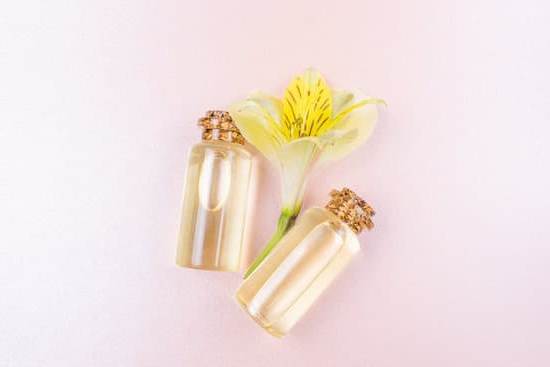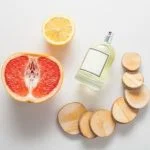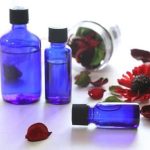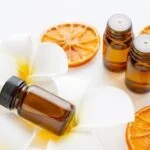Aromatherapy has been used for centuries as a natural way to promote relaxation, improve mood, and enhance overall well-being. DIY aromatherapy room sprays have gained popularity as a simple and cost-effective way to bring the benefits of essential oils into your home. By combining different essential oils with water and witch hazel, you can create personalized scents that cater to your specific needs.
The keyword diy aromatherapy room spray signifies the do-it-yourself approach to creating these customized room sprays, allowing you to control the ingredients and fragrances used in your living space. Whether you are looking to unwind after a long day, boost your energy levels in the morning, or improve focus while working from home, DIY aromatherapy room sprays offer versatile solutions for enhancing the atmosphere in any room.
In this article, we will explore the concept of DIY aromatherapy room sprays and delve into the various benefits they provide for our physical and emotional well-being. From stress relief and improved mood to better sleep quality and mental clarity, aromatherapy has a wide range of advantages that can positively impact our daily lives.
Join us as we uncover the world of essential oils, discover how to make your own signature scents, and learn valuable tips for incorporating aromatherapy into your home routine.
Benefits of Aromatherapy
Aromatherapy has been used for centuries as a holistic healing treatment that harnesses the therapeutic properties of essential oils to promote overall well-being. Incorporating aromatherapy into your daily routine through DIY aromatherapy room sprays can provide a multitude of benefits for both your physical and mental health.
One of the most notable advantages of aromatherapy is stress relief. Essential oils like lavender, chamomile, and bergamot have calming properties that can help reduce anxiety levels and induce relaxation, making them ideal for creating a serene environment in your home.
Furthermore, aromatherapy has been known to improve mood and uplift spirits by stimulating the limbic system in the brain, which is responsible for emotions and memory. Scents like citrus fruits, peppermint, and ylang-ylang are commonly used in DIY room sprays to boost mood and create a more positive atmosphere.
Additionally, certain essential oils like lavender, cedarwood, and sandalwood are renowned for their ability to enhance sleep quality. By spraying your bedroom with a soothing blend of these oils before bedtime, you can create a tranquil space that promotes deep sleep and relaxation.
Moreover, aromatherapy has been shown to aid in mental clarity and focus through the use of invigorating scents like rosemary, lemon, and eucalyptus. These essential oils have stimulating properties that can help increase alertness, sharpen concentration, and combat mental fatigue. By incorporating these oils into your DIY room spray recipes specifically tailored for boosting energy and improving focus, you can create an environment conducive to productivity and mental acuity.
| Benefits of Aromatherapy | Details |
|---|---|
| Stress Relief | Essential oils like lavender & chamomile induce relaxation |
| Improved Mood | Citrus fruits & peppermint boost mood & positivity |
| Enhanced Sleep Quality | Lavender & cedarwood promote deep sleep & relaxation |
Essential Oils
Aromatherapy has gained popularity for its numerous benefits in promoting relaxation, reducing stress, improving mood, and enhancing overall well-being. Essential oils play a crucial role in aromatherapy, with each oil possessing unique properties that contribute to creating a soothing atmosphere. When it comes to DIY aromatherapy room sprays, certain essential oils are commonly used for their calming and invigorating effects.
Lavender essential oil is one of the most popular choices for DIY room sprays due to its well-known calming and relaxing properties. Its floral scent helps promote restful sleep and alleviate anxiety, making it ideal for creating a peaceful environment in your home. Peppermint essential oil is another favorite option known for its refreshing and invigorating aroma. It can help boost energy levels, improve focus, and provide relief from headaches or respiratory congestion.
Eucalyptus essential oil is valued for its cleansing and purifying qualities, making it an excellent choice for DIY room sprays when you want to create a fresh and revitalizing ambiance. The cool, minty scent can help clear the mind, reduce fatigue, and support respiratory health. Lemon essential oil is often included in DIY room spray recipes for its uplifting and purifying characteristics.
Its bright citrus scent can elevate moods, enhance mental clarity, and combat feelings of sluggishness or negativity. By understanding the specific properties of these essential oils, you can tailor your DIY aromatherapy room sprays to suit your desired atmosphere and personal preferences.
Supplies Needed
Distilled Water
One of the essential supplies needed for making DIY aromatherapy room sprays is distilled water. Distilled water is free from impurities and minerals, making it a clean base for your room spray. Using distilled water helps prevent any unwanted residue or buildup that regular tap water may contain, ensuring that your room spray remains pure and effective.
Witch Hazel
Another key ingredient in creating DIY aromatherapy room sprays is witch hazel. Witch hazel acts as an emulsifier in the room spray mixture, helping to blend the essential oils with the water smoothly. Additionally, witch hazel has astringent properties that can help prolong the shelf life of your room spray by inhibiting bacterial growth. When selecting witch hazel for your DIY project, opt for alcohol-free options to avoid any overpowering scents.
Essential Oils
No DIY aromatherapy room spray would be complete without essential oils. These concentrated plant extracts are the backbone of any aromatherapy blend, each offering unique therapeutic benefits.
Depending on your desired effect – whether it’s relaxation, energy boost, or mental clarity – choose essential oils like lavender for calming effects, peppermint for invigoration, eucalyptus for respiratory support, or lemon for uplifting aromas. Be sure to use high-quality essential oils from reputable sources to ensure potency and purity in your room spray formulations.
Spray Bottles
To store and utilize your homemade aromatherapy room sprays effectively, you’ll need sturdy and leak-proof spray bottles. Opt for dark-colored glass bottles to protect the integrity of the essential oils from light exposure, preserving their potency over time. Make sure the spray bottles have a fine mist nozzle to disperse the room spray evenly without leaving large droplets behind.
Consider labeling each bottle with the recipe name and date of creation for easy identification and tracking of shelf life. With these essential supplies in hand, you’re ready to craft your own personalized DIY aromatherapy room sprays for a delightful sensory experience at home.
Recipe Formulations
Creating your own DIY aromatherapy room sprays can be a fun and rewarding way to personalize the ambiance of your living space. By combining different essential oils, you can tailor the scent to suit your mood or specific needs, whether you’re looking to relax after a long day, boost your energy levels in the morning, or enhance your focus while working.
Here are some step-by-step instructions on how to create different DIY room spray recipes for various purposes:
- Relaxation Blend: To create a calming room spray for relaxation, mix 15 drops of lavender essential oil, 10 drops of chamomile essential oil, and 5 drops of cedarwood essential oil in a spray bottle filled with distilled water and witch hazel. Shake well before each use and spritz around your bedroom or living area before bedtime for a peaceful night’s sleep.
- Energy Boost Formula: For an invigorating room spray that helps uplift your mood and increase energy levels, combine 10 drops of peppermint essential oil, 8 drops of orange essential oil, and 7 drops of lemon essential oil. Add these oils to distilled water and witch hazel in a spray bottle, shake thoroughly, and spray around your workspace or workout area to revitalize your senses.
- Focus Enhancement Recipe: When you need help staying focused and alert during work or study sessions, try mixing 12 drops of rosemary essential oil, 8 drops of basil essential oil, and 5 drops of frankincense essential oil in a spray bottle with distilled water and witch hazel. Use this aroma blend by spritzing it in your home office or study nook to promote mental clarity and concentration.
These DIY aromatherapy room spray recipes are just a starting point – feel free to experiment with different combinations of essential oils to find what works best for you. Remember to label each bottle clearly with its contents and intended purpose for easy identification and enjoy the benefits of aromatherapy throughout your daily routine.
Safety Precautions
When creating DIY aromatherapy room sprays, it is essential to prioritize safety precautions to ensure a safe and enjoyable experience. Essential oils are potent substances that should be handled with care to avoid adverse reactions or accidents. One crucial safety tip to consider is proper dilution ratios when using essential oils in room spray recipes.
Undiluted essential oils can be too strong and may cause skin irritation or other sensitivities. It is recommended to follow a ratio of 2% essential oil per ounce of carrier liquid, such as distilled water or witch hazel, when making room sprays.
Avoiding Contact With Sensitive Areas
Another important safety measure to keep in mind is avoiding direct contact with eyes, mucous membranes, and other sensitive areas of the body when using aromatherapy room sprays. Essential oils are highly concentrated and can cause irritation if they come into contact with these areas. When spraying the room spray, make sure to aim away from your face and those around you to prevent accidental contact with sensitive skin or eyes.
Keep Out of Reach of Children and Pets
It is crucial to store DIY aromatherapy room sprays in a location that is inaccessible to children and pets. While essential oils offer numerous benefits for adults, they can be harmful if ingested or applied directly on children or animals. To prevent accidental ingestion or exposure, make sure to keep the room sprays out of reach and stored securely in a high cabinet or shelf.
Additionally, consider labeling your homemade room sprays with ingredients and usage instructions for added safety awareness within your household. By following these safety precautions, you can fully enjoy the benefits of DIY aromatherapy room sprays while ensuring a safe environment for yourself and your loved ones.
Storage and Shelf Life
Aromatherapy room sprays are a wonderful way to create a soothing and relaxing atmosphere in your home, but it’s important to store them properly to ensure they maintain their potency over time. Proper storage not only helps preserve the effectiveness of the essential oils used in the DIY sprays but also prevents deterioration or contamination. Here are some tips on how to store your DIY aromatherapy room sprays to maximize their shelf life:
- Store in a Cool, Dark Place: Direct sunlight and heat can cause essential oils to degrade faster, so it’s best to store your room sprays in a cool, dark place away from windows or sources of heat.
- Use Dark-Colored Bottles: Essential oils are sensitive to light exposure, which can cause them to oxidize and lose their therapeutic properties. Opt for dark-colored glass bottles to help protect the oils from light damage.
- Avoid Exposure to Air: Air can also cause essential oils to deteriorate over time. Make sure your spray bottles are tightly sealed when not in use to prevent prolonged exposure to air.
Properly storing your DIY aromatherapy room sprays can help extend their shelf life and ensure that you continue to enjoy the benefits of aromatherapy for longer periods. By following these simple storage guidelines, you can maintain the potency and efficacy of your homemade room sprays.
Additionally, another important aspect of maximizing the shelf life of your DIY aromatherapy room sprays is labeling and dating each bottle. By clearly labeling the ingredients used in each spray and noting the date it was made, you can easily keep track of its freshness and potency. This will help you rotate through your room spray collection more efficiently and avoid using older sprays that may have lost their effectiveness.
Remembering these storage tips when making and using your DIY aromatherapy room sprays will ensure that you get the most out of each bottle while creating a refreshing and tranquil atmosphere in your home with ease. Whether you prefer calming scents for relaxation or invigorating blends for an energy boost, proper storage practices will help prolong the life of your homemade creations for continuous enjoyment.
Personalization and Tips
In conclusion, creating your own DIY aromatherapy room sprays can be a simple and enjoyable way to bring the benefits of aromatherapy into your home. By using essential oils with various properties, you can customize your room sprays to cater to different needs such as relaxation, energy boost, or focus. The calming and relaxing atmosphere that these sprays can create can contribute to improved sleep quality, enhanced mood, stress relief, and mental clarity.
When personalizing your DIY room sprays, consider experimenting with different essential oil combinations to find scents that resonate with you. Whether you prefer floral notes like lavender for relaxation or invigorating scents like peppermint for an energy boost, the possibilities are endless. Additionally, adding personalized labels and packaging can make your room sprays not only functional but also visually appealing.
While enjoying the benefits of DIY aromatherapy room sprays, it is important to remember safety precautions such as proper dilution ratios and keeping the products out of reach of children and pets. By storing your room sprays properly in a cool, dark place, you can prolong their shelf life and maintain their potency over time. Overall, incorporating personalized DIY room sprays into your daily routine can enhance your well-being and create a more soothing environment in your home.
Frequently Asked Questions
How Do You Make Aromatherapy Room Spray?
Making an aromatherapy room spray involves combining essential oils with distilled water and a natural emulsifier like witch hazel or vodka. Simply mix the ingredients in a spray bottle, shake well before use, and spritz to enjoy the benefits of aromatherapy.
Why Use Witch Hazel in Room Spray?
Witch hazel is commonly used in room sprays for several reasons. It acts as a natural emulsifier that helps essential oils mix evenly with water, preventing separation. Additionally, witch hazel has antibacterial properties that can help prolong the shelf life of your room spray and keep it fresh.
How Do You Make Aromatherapy Body Spray?
Creating an aromatherapy body spray is quite similar to making a room spray. Start by choosing your favorite essential oils, then mix them with distilled water and witch hazel in a spray bottle.
Shake well before each use to ensure the oils are evenly distributed. This body spray can serve as a natural fragrance while providing therapeutic benefits from the essential oils used.

Are you looking for a natural way to improve your health and wellbeing?
If so, aromatherapy may be the answer for you.






